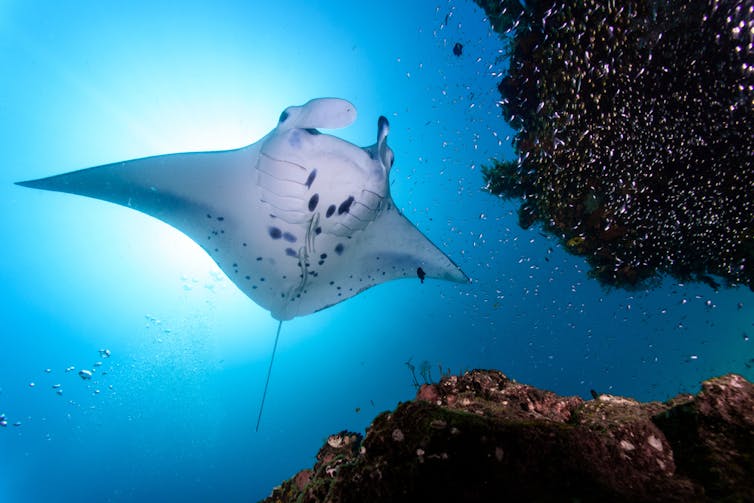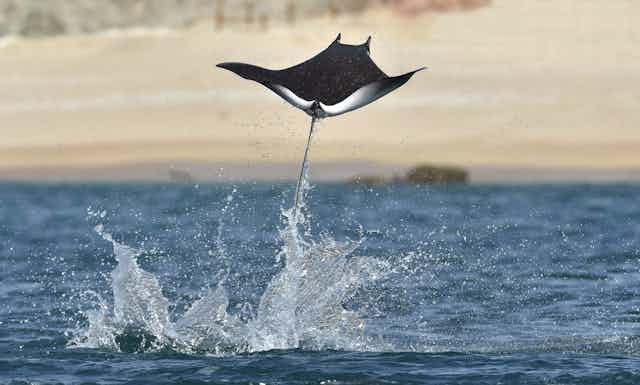Devil rays, close cousins of the enormous manta rays, are stars of nature documentaries. They tend to collect together in large numbers, and some species leap from the water. Because of this they are popular with divers and, like mantas, important for tourism. But as is so often the case with some of our favourite species, these charismatic creatures are under threat from humans, specifically, because of the gill plate trade.
Devil rays are pulled out of the sea in huge numbers, all over the world, and butchered on beaches for their gill plates, the feather-like organs that they use to filter plankton and small fish – their preferred prey – from the oceans. The gill plates are then sold in markets in parts of Asia as a purported health tonic, despite the fact that there is no scientific evidence whatsoever to support this claim.
Unfortunately, these rays are both vulnerable to targeted fishing and often victims of bycatch. To make matters worse, the nine described species of devil ray are known to be some of the slowest reproducing of any elasmobranch, the group which includes sharks and rays. Females take many years to reach maturity, and only produce a single live pup every few years. Huge declines of these rays have been documented all over the world – at a rate of to 99% in some places.
New law
So what is being done? In September and October 2016, the Convention on the International Trade in Endangered Species (CITES) met in Johannesburg, South Africa, for its 17th conference. This is the same organisation which is responsible for regulating trade in some of the world’s most infamous wildlife products, including elephant ivory and rhino horn. The meeting happens every three years, and delegates from the 183 signatory countries discussed listing all nine devil ray species under the convention, to regulate the trade in the species and their parts.

I was lucky enough to be present at the meeting, and to see the devil ray proposal achieve the required two-thirds majority vote. These new regulations are being implemented in April 2017 – so it is becoming illegal to trade in devil rays, or any of their parts, such as gill plates, across international borders without permits approving that the trade is not detrimental to the wild population.
Genetic identification
One of the main concerns about enforcing the devil ray regulations is identifying between species, which are visually very similar. Compound that with the fact that those monitoring the fisheries – and customs officials – are often presented with gill plates, and not the whole specimen. Despite these issues, the devil ray listing will also greatly benefit the existing protections for manta rays, as manta gill plates can no longer be hidden among devil ray gill plates.

A large part of my work focuses on developing traceability tools that can identify a devil ray, or any of its parts, and which region it has come from. The intention is that this will assist with enforcement and monitoring of the new CITES regulations. I am also doing the same for the manta rays, which were listed on CITES in 2013.
Essentially, we take tissue samples from individuals of known species and sequence short fragments of the DNA that they contain. This allows us to build up a picture of the genetic signatures of each species and population, to which we can compare samples from an unknown individual or part. What we are looking for is a minimum number of regions within the genome that are unique enough within species to give us confidence in assignment and this assists us in identifying which species it came from.
The project is fortunate to have had a lot of support from international researchers and organisations, and therefore has access to one of the world’s most comprehensive sets of manta and devil ray tissue samples, which will allow the final tool to be as robust as possible. The hope is, that with regulations such as CITES effectively enforced, marine life will still be as vibrant and exciting for many generations to come.

